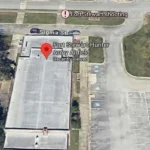Twin Meteor Showers July 29-30
Twin Meteor Showers July 29-30: Skywatchers are in for a celestial treat as two meteor showers — the Delta Aquariids and Alpha Capricornids — peak on July 29 and 30. These twin events will light up the night sky, offering a rare double spectacle for astronomy enthusiasts across the globe.

Image: BBC
Two Meteor Showers Set to Illuminate the Night Sky
In a dazzling display of natural beauty, the Delta Aquariid and Alpha Capricornid meteor showers are set to peak simultaneously on the nights of July 29 and 30. This rare astronomical alignment presents a unique opportunity for stargazers to witness up to 30 meteors per hour, depending on local conditions.
While these showers occur annually, their overlap this year adds to the visual brilliance. The best viewing time will be after midnight in areas with clear skies and minimal light pollution.
What Are Delta Aquariids and Alpha Capricornids?
The Delta Aquariid meteor shower originates from debris left by the comet 96P/Machholz. It typically runs from mid-July to early August, with its peak showcasing around 20 meteors per hour. These meteors are known for their long tails and faint glow.
On the other hand, the Alpha Capricornid shower, although less intense, offers brighter and slower-moving fireballs. It stems from the remnants of comet 169P/NEAT, and it often surprises viewers with a few spectacular bursts of light.
Together, they create a mesmerizing night-sky performance.
How and Where to Watch the Meteor Showers
To witness this celestial event in its full glory:
Choose a dark location away from city lights.
Look toward the southern sky after midnight.
No telescope or binoculars are needed — the meteors will be visible to the naked eye.
Allow at least 20–30 minutes for your eyes to adjust to the dark.
According to astronomers, the best viewing conditions will be in rural areas with clear skies. Countries like India, the US, parts of Europe, and Australia are expected to have excellent visibility if weather permits.
Astronomical Significance and Public Excitement
Events like these are more than just visual wonders. They help generate public interest in astronomy and space science. Educational institutions and planetariums often organize sky-watching events to engage communities and inspire the younger generation.
As NASA explains, meteor showers occur when Earth passes through trails of debris left by comets, which burn up upon entering our atmosphere, creating bright streaks of light.
The overlapping of these two showers offers not only visual delight but also a chance to learn about our solar system’s dynamic movements.
Read More..- Manhattan Shooter Shane Tamura’s Final Note Reveals Disturbing Motive
Don’t Miss the Cosmic Show
If you’ve never watched a meteor shower before, now is the perfect time. The twin peak of Delta Aquariids and Alpha Capricornids promises a spectacular natural show that doesn’t come around often.
So, grab a blanket, head outside, and look up — the cosmos is ready to perform.














